- Home
- James Rollins
The Devil Colony Page 5
The Devil Colony Read online
Page 5
He struggled up. Kawtch shimmied closer on his belly, cowering, tail between his leg. If Hank had a tail, he’d have done the same. He placed a reassuring palm on the dog’s side.
“It’ll be okay.”
He hoped it was true.
By now, the crowd had regained its collective footing. A panicked exodus began. The news crew retreated to higher ground, shuffled back by a cordon of National Guard. Two soldiers manhandled the governor up the trail, a precaution in case there was another attack.
Harry pictured the bag tossed by the girl. When it had landed by the crate, it had flapped open and its contents spilled out: cubes of yellowish-gray clay, embedded with wires.
Major Ryan had immediately recognized the threat.
Bomb.
But the warning had come too late for Maggie.
A knot of anger burned in the pit of his belly. He let it settle there as he pictured the attacker. From the girl’s burnished copper skin, brown eyes, and black hair, she was definitely Native American. A homegrown terrorist. As if matters here weren’t bad enough.
Numb with grief, he stumbled toward the blast zone, needing to understand. To the side, Major Ryan picked up his helmet and placed it back on his head.
“I’ve never seen anything like this,” Ryan said, still dazed. “The force of this explosion should have taken out half the crowd. Including us.” He held up an open palm. “And just feel that heat.”
Hank did. It felt like a blast furnace. The air reeked of burning brimstone, turning his stomach.
As they watched, a large boulder crumbled apart within the blast zone, breaking down into smaller rocks. The face of the cliff began to do the same, disintegrating into a flow of boulders and sand. It was as if the hard granite had become loose sandstone, friable and weak.
“Look at the ground,” Ryan said.
Hank stared at the blasted rock, steaming and awash with a swirl of mist. The drizzling rain hissed and spattered as it struck. Still, he didn’t see what had Major Ryan so agitated. Then again, the man had much younger eyes.
Hank dropped to a knee to inspect the ground more closely. Then he saw it, too. He’d missed it through the swirl of steam. The stone surface wasn’t solid, more like ground pepper—and it was moving!
The grains jittered and trembled as if they were drops of oil simmering atop a hot skillet. He watched a small pebble on the surface dissolve into coarse sand, then into a dusty powder. A drop of rain struck the ground and blasted a crater. Like a pebble hitting a still pond, ripples spread outward across the microfine surface
Hank shook his head in disbelief. Fearful, he studied where the blast zone ended and solid ground began. As he stared, the bordering edge of stone crumbled to sand, incrementally expanding the blast zone.
“It’s spreading,” Hank realized, and pushed Ryan back.
“What are you talking about?”
Hank had no answers, only a growing certainty. “Something is still active. It’s eating away the rock and radiating outward.”
“Are you nuts? Nothing can—”
From the center of the blast zone, a belch of water burst upward from below and coughed into a steaming column, rising several yards into the air. A scalding heat chased them farther off.
By the time they stopped, Hank’s skin burned, and his eyes felt parboiled. He gasped and choked out a few words.
“Must’ve cracked into the geothermal spring . . . under the valley.”
“What are you talking about?” Ryan pulled his jacket collar over his mouth and nose. The burning sulfur made even breathing dangerous.
“Whatever’s happening here, it’s not only spreading outward—”
Hank pointed to the minigeyser.
“—it’s also heading down.”
Chapter 3
May 30, 3:39 P.M.
Washington, D.C.
So much for dinner plans.
Though the explosion in Utah was only an hour old, Painter Crowe knew he’d be in his office all night. Details continued to flow in by the minute, but information remained sketchy due to the remote mountainous location of the blast. All of Washington’s intelligence communities were on high alert and mobilizing to bear on the situation.
Including Sigma.
Painter’s group operated as a covert wing for DARPA, the Defense Advanced Research Projects Agency. His team was composed of handpicked Special Forces soldiers—those whose IQs tested off the scales or who showed unique mental acumen. He recruited and retrained them in various scientific disciplines to act as field operatives for the Defense Department’s research-and-development wing. Teams were sent out into the world to protect against global threats.
Normally, such a domestic attack as in Utah would not fall within his team’s purview, but a few anomalous details had drawn the interest of his boss, the head of DARPA, General Gregory Metcalf. Painter might have still argued against utilizing Sigma’s resources for such a messy business, but as a result of the controversy surrounding the blast, even the president—who owed his life to Sigma in the past—had personally requested their assistance in this delicate matter.
And one does not say no to President James T. Gant.
So Painter’s barbecue plans with his girlfriend were put on hold for the night.
Instead, he stood with his back to his desk and studied the large flat-panel monitors mounted on the three walls of his office. They depicted various views of the blast. The best footage came from the CNN cameras that had recorded the event. The other monitors flowed with grainy video and photos captured from cell phones, the millennium’s new digital eyes on the world.
For the hundredth time, he watched the looping feed from CNN. He saw an older woman—Dr. Margaret Grantham, an anthropologist—leaning over a green military transport crate. She undid the latches and lifted the lid. A commotion ensued, jittering the camera feed. The view swung wildly. He caught a glimpse of a figure behind the woman, fleeing away—then a blinding flash of light.
Using a remote control, he froze the footage. He stared into the heart of the blast. If he squinted, he could make out the shadow of the woman within that glare, a dark ghost within the blaze. He moved the image forward frame by frame and watched her shadow slowly consumed by the brightness, whittled away to nothing.
With a heavy heart, he hit the fast-forward button. From there, the footage became chaotic and jostled: trees, sky, running figures. Eventually the cameraman found a vantage point from which he felt safe enough to resume shooting. The view swung back to the steaming blast zone. Chaos still reigned as people fled the site. A handful of others remained below, cautiously examining the scene. Moments later, a steaming geyser erupted and chased even the stragglers away.
A preliminary report already sat on his desk from Sigma’s resident geologist. He estimated the blast had cracked into a “subsurface geothermal stream.”
Painter stared again at the geyser. It wasn’t subsurface any longer. The geologist’s assessment had included a topographic map dotted with hot springs in the vicinity. Even in the dry technical jargon of the report, Painter could sense the enthusiasm brimming in the young geologist, the raw desire to investigate the site firsthand.
While he appreciated such passion, the National Guard had the place locked down. A search was under way for the shadowy figure behind the blast. Using the remote control again, he froze the fleeting image of the bomber, blurry and indistinct, caught for less than a second.
According to interviews, it was a young woman. She had tossed a backpack full of C4, wired with detonators, then fled into the woods. The National Guard, local police forces, and agents from Salt Lake City’s FBI field office were attempting to seal off the area, but the mountainous terrain, rugged and thickly wooded, posed a challenge to finding her, especially if she knew the area.
To make matters worse, eyewitnesses reported that the woman was Native American. If true, that would mean even more political tension.
Painter caught his reflecti
on in the monitor and searched for his own ancestry. He was a half-blooded Pequot Indian, on his father’s side, but his blue eyes and light skin came from his Italian mother. Most never pegged him as Native American, but the features were there, if you looked hard enough: the wide, high cheekbones, the deep black hair. But as he aged, those Indian traits shone more strongly.
Lisa had commented on it only last month. They had been spending a lazy Sunday in bed, reading the paper, finding no reason to get up. She had leaned on an elbow and traced a finger down his face. “You’re keeping your tan longer, and these sun crinkles are deepening. You’re getting to look a lot like that old photo of your father.”
Not exactly something you wanted to hear when lounging in bed with your girlfriend.
She had reached and fingered the single lock of white hair behind his ear, tucked like a snowy feather against the field of black. “Or maybe it’s just that you’re letting your hair grow out. I could almost tie this into a warrior’s braid.”
In fact, he hadn’t been growing his hair out. He just hadn’t had a chance to get it cut for a couple of months. He’d been spending more and more time at Sigma Command. The covert facility lay buried beneath the Smithsonian Castle on the National Mall, occupying what had once been bomb shelters during World War II. The location had been picked for both its convenient access to the halls of power and for its proximity to the Smithsonian Institution’s many research facilities.
It was where Painter spent most of his days. His only windows on the world of late were his office’s three giant monitors.
He turned away and crossed back to his desk, contemplating the implication of a homegrown terrorist, one with a Native American background. He seldom gave his own heritage much thought, especially after spending most of his youth in a series of foster homes. His mother, suffering from depression, had stabbed his father to death after seven years of marriage and the birth of their son. Afterward, Painter continued to have some contact with his Native American roots, fostered through the extended family of his father’s tribe. But after such a hardscrabble and chaotic upbringing, he’d grown to place more emphasis on the American part of his Native American ancestry.
A knock on his open office door interrupted him. He glanced up to see Ronald Chin, Sigma’s geology expert, standing in the doorway. “Thought you should see this.”
Painter waved the geologist inside, almost expecting him to have to duck through the doorway. Chin stood just shy of six feet, missing that mark only because he kept his head shaved to the skin. He wore a gray lab jumpsuit, zippered half down to reveal an Army Ranger T-shirt.
“What is it?” Painter asked.
“I was poring over some of the reports and came across something that could be important.” He placed a file atop the desk. “It was from a debriefing of a National Guardsman on the scene, a Major Ashley Ryan. Most of the questions centered on the identity of the bomber, along with events leading up to the blast. But Major Ryan seemed mighty agitated about the blast itself.”
Painter sat up straighter and reached to the file.
“If you look at page eighteen, I’ve highlighted the key passages.”
Painter opened the report, flipped pages, and read what was marked in yellow. There were only a handful of exchanges, but the major’s last statement sent a chill through his blood.
He read it aloud. “ ‘The ground . . . it looked like it was dissolving away.’ ”
Chin stood with hands behind his back on the far side of his desk. “From the beginning, I thought there was something odd about that blast. So I consulted Sigma’s demolition expert. He came to the same conclusion. For a detonation strong enough to break through bedrock and crack open a geothermal spring, the concussive blast radius should have been tenfold larger.”
A gruff voice interrupted from the doorway. “That’s right. Not nearly enough bang.”
Painter turned to the doorway again. Apparently Sigma’s new resident bomb expert had come to support Chin’s assessment. The man leaned against the door frame. He stood half a foot taller than Chin, and outweighed his teammate by a good forty pounds, most of it muscle. His dark hair was stubble, but he still slicked back what little was there with gel. The man wore the same coveralls as Chin, but from the bared chest, it looked like he was wearing nothing underneath.
In his right hand, he kneaded a fistful of clay.
Painter grew concerned. “Kowalski, is that the C4 from the weapons locker?”
The man straightened with a shrug, suddenly looking sheepish. “Thought I’d run a test . . .”
Painter felt a sick lurch in his stomach. Joe Kowalski was ex-Navy, hired by Sigma a few years ago. Unlike others, he was more of an adoptee than a recruit. He had been serving as muscle and team support, but Painter sensed there might be more to this guy than met the eye, a vein of sharpness hidden beneath that dull exterior.
At least he hoped so.
Painter had reviewed the man’s dossier since he’d joined Sigma—evaluating his aptitude and skills—and eventually assigned him to a field of study for which he seemed best suited: blowing stuff up.
Painter was beginning to regret that decision. “I don’t think any explosives tests will be necessary.” He tapped the file on his desk. “Have you read this field report?”
“I skimmed it.”
“What’s your take?”
“Definitely wasn’t C4.” He lifted his fist of explosive and gave it a squeeze. “The explosion was something else.”
“Any thoughts?”
“Not without examining the blast field. Collecting some samples. Otherwise I have no clue.”
He had to give Kowalski credit. It was a passable evaluation.
“Well, someone knows the truth.” Painter leaned back in his desk chair and glanced to the screen with the frozen image of the bomber. “That is, if we can find her.”
2:22 P.M.
Utah Wilderness
Kai hid in a dense thicket of mountain willows alongside a cold stream. She knelt, cupped the clear water, and drank. She ignored the nagging concerns of giardia or other intestinal parasites. Most of the flow here was fresh snowmelt. As thirsty as she was, she’d take her chances.
After drinking enough to wet her mouth and take the edge off her thirst, she covered her face with icy-wet palms. The cold helped her focus.
Still, even with closed eyes, she could not get the image out of her head. As she had fled the burial cave, she had glanced back in time to see the flash of brilliance, hear the thunderclap. Screams and cries chased her into the deeper woods.
Why did I drop my pack?
John Hawkes had sworn the C4 was safe. He’d said she could fire a bullet into one of the explosive charges, and nothing would happen. So what went wrong? Already scared, she came up with one frightening possibility. Had someone from WAHYA witnessed her flight out of the cave and telephoned in the detonation command?
But why would they do that, knowing people were around?
No one was supposed to get hurt.
She hadn’t had any time to think. For the past two hours, she’d been running headlong through the woods, as fleet-footed as any deer. She kept hidden from the air as much as possible. She’d already spotted one helicopter as it skimmed past a ridgeline. It looked like a news chopper rather than law enforcement, but it still sent her diving for the thicket.
During the remaining hours of daylight, she had to put as much distance as possible between herself and any pursuers. She knew they’d be looking for her. She pictured her face being broadcast across the nation. She was under no illusion that her identity would remain a secret for long.
All those cameras . . . someone surely got a good picture of me.
It was only a matter of time before she was caught.
She needed help.
But whom could she trust?
4:35 P.M.
Washington, D.C.
“Director, it looks like we finally caught a break.”
“Show me,” Painter said as he stepped into the darkened room, lit only by a circular bank of monitors and glowing computer screens.
Sigma’s satellite com always reminded him of the control room on a nuclear submarine, where the ambient light was kept low to preserve night vision. And like a sub’s control room, this was the nerve center of Sigma Command. All information flowed into and out of this interconnected web of feeds from various intelligence agencies, both domestic and foreign.
The spider of this particular web stood before a bank of monitors and waved Painter over. Captain Kathryn Bryant was Sigma’s chief intelligence expert and had grown to become Painter’s second-in-command at Sigma. She was his eyes and ears throughout Washington and a savvy player in the internecine world of D.C. politics. And like any good spider, she maintained a meticulous web, casting strands far and wide. But her best asset was an uncanny ability to monitor each vibrating filament of her web, filter out the static, and produce results.
Like now.
Kat had called him down here with the promise of a breakthrough.
“Give me a second to bring up the feed from Salt Lake City,” she said.
She winced slightly, placed a palm on her belly, and continued to type one-handed on a keyboard. At eight months along, she was huge, but she refused to go out early for maternity leave. Her only concession to her condition was that she’d abandoned her usual tight dress blues for a casual loose dress and jacket, and allowed the curls of her auburn hair to drape past her shoulders, rather than pinning them up.
“Why don’t you at least sit down?” he said, and pulled out the chair in front of the monitor.
“I’ve been sitting all day. Baby’s been doing a tap dance on my bladder since lunch.” She waved him closer. “Director, you need to see this. From the start of the investigation, I’ve been monitoring the local news programs over in Salt Lake City. It wasn’t difficult to hack into their computer servers and look over their shoulders as they readied their evening news broadcasts.”

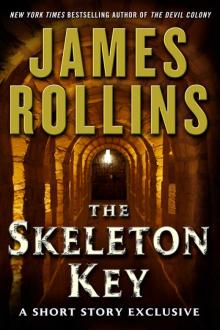 The Skeleton Key
The Skeleton Key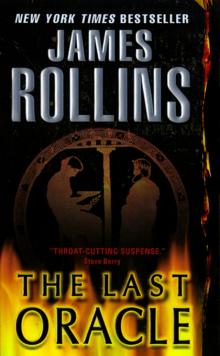 The Last Oracle
The Last Oracle The Judas Strain
The Judas Strain Black Order
Black Order Sandstorm
Sandstorm Ghost Ship
Ghost Ship The Devil Colony
The Devil Colony Subterranean
Subterranean The Doomsday Key
The Doomsday Key The 6th Extinction
The 6th Extinction Bloodline
Bloodline Jake Ransom and the Howling Sphinx
Jake Ransom and the Howling Sphinx The Midnight Watch
The Midnight Watch Map of Bones
Map of Bones The Demon Crown
The Demon Crown Deep Fathom
Deep Fathom Sigma Guide
Sigma Guide Kowalski's in Love
Kowalski's in Love Jake Ransom and the Skull King's Shadow
Jake Ransom and the Skull King's Shadow Excavation
Excavation The Seventh Plague
The Seventh Plague Altar of Eden
Altar of Eden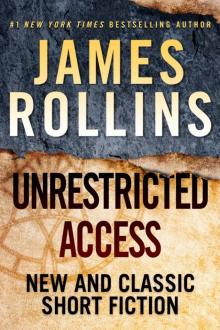 Unrestricted Access: New and Classic Short Fiction
Unrestricted Access: New and Classic Short Fiction Indiana Jones and the Kingdom of the Crystal Skull
Indiana Jones and the Kingdom of the Crystal Skull Crucible
Crucible The Eye of God
The Eye of God The Bone Labyrinth
The Bone Labyrinth The Last Odyssey: A Thriller
The Last Odyssey: A Thriller Unrestricted Access
Unrestricted Access Amazonia
Amazonia Blood Brothers: A Short Story Exclusive
Blood Brothers: A Short Story Exclusive Map of Bones: A Sigma Force Novel
Map of Bones: A Sigma Force Novel The Skeleton Key (sigma force)
The Skeleton Key (sigma force)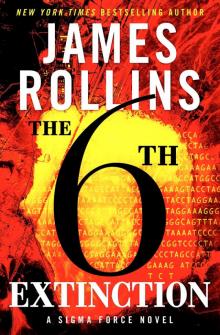 Sigma Force 10 - The Sixth Extinction
Sigma Force 10 - The Sixth Extinction Innocent Blood
Innocent Blood Map of Bones sf-2
Map of Bones sf-2 The Eye of God: A Sigma Force Novel
The Eye of God: A Sigma Force Novel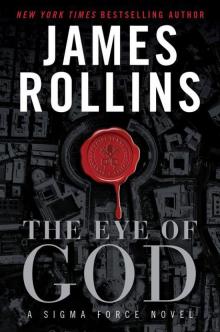 The Eye of God: A Sigma Force Novel sf-9
The Eye of God: A Sigma Force Novel sf-9 The Pit
The Pit Indiana Jones and the The Kingdom Of The Crystal Skull
Indiana Jones and the The Kingdom Of The Crystal Skull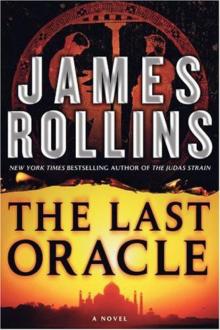 The Last Oracle (2008) sf-5
The Last Oracle (2008) sf-5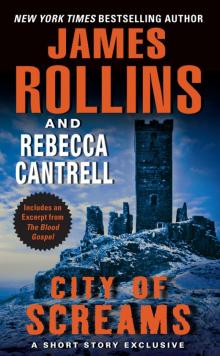 City of Screams
City of Screams The Doomsday Key and The Last Oracle with Bonus Excerpts
The Doomsday Key and The Last Oracle with Bonus Excerpts The Judas Strain sf-4
The Judas Strain sf-4 Blood Infernal
Blood Infernal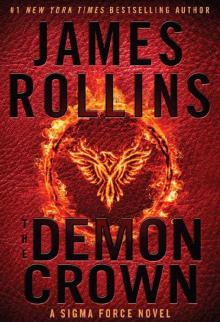 The Demon Crown: A Sigma Force Novel
The Demon Crown: A Sigma Force Novel War Hawk: A Tucker Wayne Novel
War Hawk: A Tucker Wayne Novel SANDSTORM sf-1
SANDSTORM sf-1 Bloodline: A Sigma Force Novel
Bloodline: A Sigma Force Novel Amazonia: a novel
Amazonia: a novel The Last Oracle: A Sigma Force Novel
The Last Oracle: A Sigma Force Novel City of Screams (the order of the sanguines)
City of Screams (the order of the sanguines)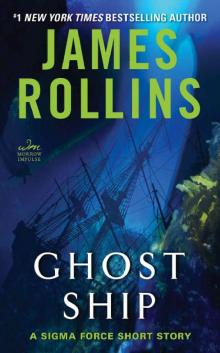 Ghost Ship: A Sigma Force Short Story
Ghost Ship: A Sigma Force Short Story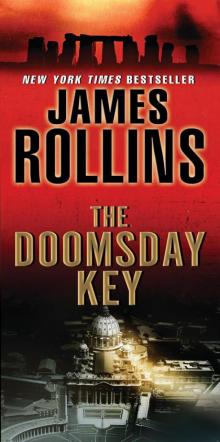 The Doomsday Key: A Sigma Force Novel
The Doomsday Key: A Sigma Force Novel